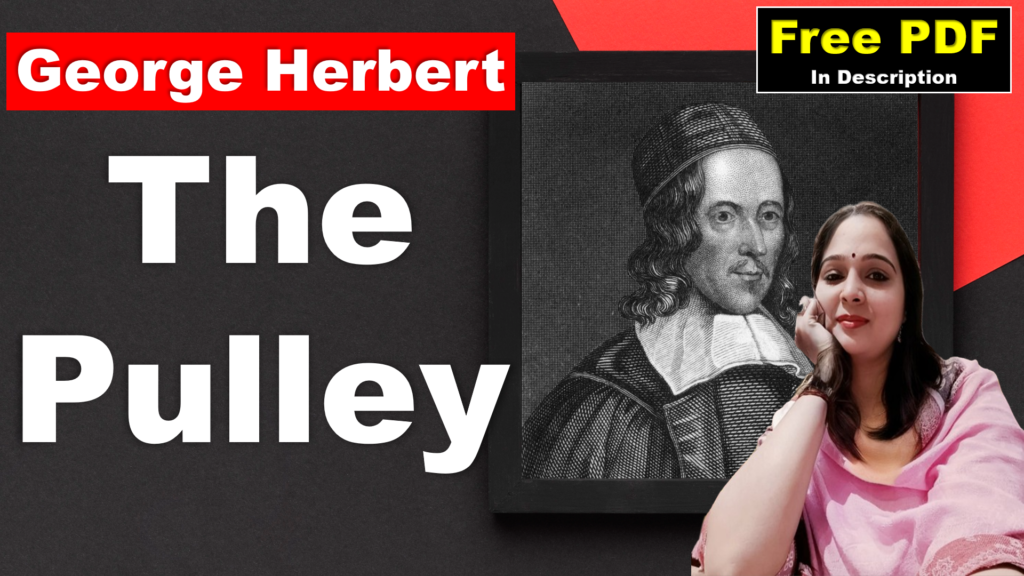
Essay Type Questions
Q. Write the critical appreciation of the poem?
A. Title and Author The poem “The Pulley” is written by George Herbert. He was a Welsh-born poet, orator, and priest of the Church of England. His religious beliefs heavily influenced his poetry, and he is known for his profound and deeply spiritual poems.
Type of Poem “The Pulley” is a metaphysical poem. Metaphysical poetry is a type of poetry that explores complex and abstract ideas through extended metaphors or conceits. These poems often deal with topics such as love, religion, and morality, using unusual metaphors to convey these themes.
Theme The main theme of “The Pulley” is the relationship between God and humanity. The poem explores the idea that God uses unrest as a ‘pulley’ to draw humans closer to Him. This theme reflects Herbert’s belief in a God who desires a close relationship with His creation.
Metaphor of the Pulley In “The Pulley”, Herbert uses the metaphor of a pulley to illustrate the divine-human relationship. A pulley is a simple machine that uses tension to lift an object. In the poem, God uses the tension of unrest (the pulley) to lift or draw humanity closer to Him.
God’s Blessings and Rest In the poem, God bestows various blessings upon humanity, such as strength, beauty, wisdom, and honor. However, He deliberately withholds one blessing – ‘rest’. This lack of rest creates a sense of longing in humans, which draws them closer to God. This reflects Herbert’s belief that human restlessness is part of God’s plan to draw humanity back into a divine embrace.
Language and Imagery Herbert uses rich language and vivid imagery in “The Pulley”. He personifies God and describes the blessings flowing from God to humans. Despite the complexity of the language, it effectively conveys the poem’s themes.
Structure and Form “The Pulley” by George Herbert is a four-stanza poem that is separated into sets of five lines or quintains. Each of these quintains follows a structured rhyme scheme1. They conform to a pattern of ABABA, alternating end sounds as the poet saw fit. The consistent structure and form give the poem an ordered sense.
Final Line The final line of the poem is “Yet let him keep the rest”. This suggests that true rest or satisfaction can only be found in seeking God. This line reinforces the central theme of the poem – that human restlessness is part of God’s plan to draw humanity back into a divine embrace.
Conclusion In conclusion, “The Pulley” is a thought-provoking exploration of divine-human relations. It reflects Herbert’s personal beliefs about God’s desire for a close relationship with humanity. The effective use of metaphysical conceits, vivid imagery, and structured form make this poem a significant work in English literature.





